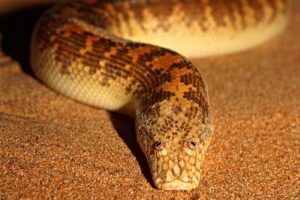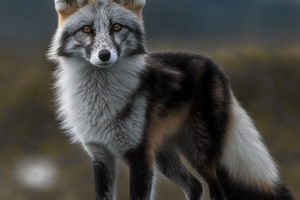That’s why you should read the article
Without oxygen, there is no efficient combustion in cells and thus no evolved life.
Oxygen played a role in the first mass extinction on Earth where 99% of all life died.
In order to reach new worlds, we need oxygen with us – and the technology is there.
Humans can explain how water reached the earth and they have good explanations of how the earth’s crust moves and forms high mountains and deep valleys. But how oxygen escaped into the atmosphere and thus quickly started a great life has been shrouded in mystery for decades.
People also ask why it took 1.2 billion years from the first photosynthetic bacteria to produce oxygen in the Earth’s oceans until it was possible to breathe this active gas in the atmosphere.
Like when oxygen was finally released why did it kill most life on earth and cause a 300 million year long climate crisis.
Now, after much effort, scientists have solved the mystery of the fire and found the answer deep below the surface of the earth.
Iron and gas in the depths ate the oxygen
Oxygen is one of the most widespread elements in the universe. It has the atomic number 8 – that is, an oxygen atom consists of eight protons in the nucleus and eight electrons surrounding the nucleus.
When two oxygen atoms fuse together, they form the diatomic oxygen molecule O 2 – which we understand as oxygen.
A 75 kg person contains 50 kg of oxygen, as the body consists mainly of water, H 2 O.
3.6 billion years ago, the air on Earth was toxic. Oxygen was certainly found, but it was bound to carbon in the gas CO 2 which, together with methane, hydrogen, nitrogen and argon, formed the atmosphere.
Under these harsh conditions, life started in the sea, where among others blue-green algae developed. The bacteria formed large colonies called striated algae, and their new photosynthesis quickly triggered a large production of oxygen in the oceans.
But blue-green algae had barely produced the oxygen before it was removed from the water again. Almost as soon as oxygen was released, it bonded with dissolved iron in the sea and precipitated as iron oxide, which settled on the ocean floor.
But the ocean’s voracious iron is only a small part of the explanation for why it took 1.2 billion years from the first blue-green algae to photosynthesize, until the fire eventually reached Earth’s atmosphere.
In 2009, chemist Chadlin M. Ostrander at the University of Arizona showed that although oxygen first reached the atmosphere 2.4 billion years ago, the shallow sea already contained free oxygen 2.5 billion years ago – even longer.
Free oxygen in the ocean should have caused oxygen in the atmosphere, because when a gas dissolves in a liquid, it happens in proportion to the pressure of the gas at the surface and vice versa. Free oxygen in water should thus lead to oxygen enrichment in the air – if the gas does not undergo a chemical reaction as soon as it is released into the atmosphere.
Greedy iron took oxygen hostage
Earth’s atmosphere was devoid of all oxygen at the birth of the planet. But 3.6 billion years ago, organisms began to convert CO 2 into O 2 . However, it took another 1.2 billion years before the first oxygen molecules escaped from the ocean.
3. Oxygen rises from the ocean
It was only 2.4 billion years ago that the amount of dissolved iron in the sea was so low that the oxygen could be released from the ocean and began to oxygenate the atmosphere. This increased amount of oxygen in the air was the beginning of advanced multicellular organisms.
Although this free oxygen in the shallow water should have been released into the air, the first traces of oxygen in gaseous form first appeared 2.4 billion years ago – ie 100 million years later. Scientists wondered about this and in 2020 they found an answer that marks a turning point.
Led by biochemist Shintaro Kadoya at the University of Washington, a group of scientists proved that it was at this time in Earth’s history that a decisive change took place deep within the Earth.
The globe is divided into layers, at the top is the earth’s crust and below it is a layer called the mantle. According to scientists, the mantle became oxidized 2.4 billion years ago – that is, it came to contain more chemical compounds saturated with oxygen, which led to changes in the chemical composition of volcanic eruptions on the surface.
Until now, the gases in the eruption had consisted of oxygen-poor species such as hydrogen and coal that reacted rapidly with the few free oxygen atoms in the air, but now the volcanoes emitted more water, H 2 O and carbon dioxide, CO 2 which was already saturated of oxygen.
Did you know …
… that people cannot see, smell or taste fire?
… that the element fire was discovered in 1771 by the Swedish pharmacist Carl Wilhelm Scheele?
… that although fire is necessary for combustion, fire itself cannot burn?
Fewer and fewer of the oxygen molecules that the blue-green algae sent into the atmosphere disappeared, and therefore the amount of free oxygen gradually increased.
Although oxygen has long been a great boon to life on Earth, it was at first a complete terror—including to the blue-green algae that produced it.
Excess led to extinction
Oxygen was the purest poison for many of the organisms that had lived on an oxygen-poor earth. This type of gas thus caused the first mass death on the planet, where up to 99% of all life disappeared.
However, this disaster had just begun when the oxygen also changed the composition of the air and broke down some of the gases that had been present in large quantities.
Until then, the greenhouse gas methane had covered the globe and kept it warm, but now the methane reacted with oxygen. Together, these two substances became carbon dioxide and water, and although carbon dioxide is also a type of greenhouse gas, it is much milder than methane.
The result of this was that the temperature on earth dropped rapidly and this lasted for almost 300 million years. The ice sheet spread many times from the poles, sometimes all the way to the equator, and this period has been attributed to the snowball earth.
Fire and methane entered into a devastating alliance that caused the Earth’s thermal system to collapse and the globe to become covered in a mass of ice.
The species that survived these shocks had to adapt to an oxygen-poor environment, for example deep under the ocean floor, while new organisms evolved rapidly and adapted to oxygen-rich conditions.
Namely, oxygen is an extremely efficient tool in the metabolism of organisms and also plays a role as fuel in energy production in the cells’ energy granules. There, the substance adenosine triphosphate, ATP, is produced from the sugar glucose, by absorbing oxygen in so-called oxidation.
Decomposition of glucose with oxygen is thus thirteen times more efficient for an organism than the chemical reactions in, for example, bacteria that live without oxygen. This gave newly introduced organisms a huge advantage in evolution.
However, the amount of oxygen continued to be quite low or between 1/10 and 1/100 compared to the current situation – until about 850 million years ago, and at that time the organisms were relatively small. This has recently been explained in a scientific paper published in May 2021.
Low oxygen leads to smaller animals
In the study, researchers at the Georgia Institute of Technology, led by biologist Ozan Bozdag, conducted experiments with a specific type of genetically modified yeast that behaves like a very simple multicellular organism by forming large mother-daughter colonies.
-219°C is the temperature required for oxygen to freeze. Light blue fire crystals then form.
The species prefers to live in oxygen-rich conditions, but can survive without oxygen. The scientists cultured the yeast for more than 800 generations at different levels of oxygen.
When the yeast lived without oxygen and had to power its chemical reactions in other ways, the size of individuals quadrupled over 800 generations. The same thing happened to yeast cells that lived in high oxygen levels.
But when the yeast was exposed to a small amount of oxygen, corresponding to what was on Earth about 850 million years ago, the colonies became very small.
The scientists’ conclusion is that oxygen actually limits the size of those organisms when the substance is only present in small amounts, because in simple organisms the oxygen has to enter the cells directly from the environment.
That is why advanced multicellular organisms – and thus the animals on earth – appeared for the first time with the so-called Ediacaran flag about 600 million years ago.
Life has become dependent on oxygen
By now, animal life has spread all over the globe and evolution has made countless experiments with various respiratory systems to transport the oxygen both into and around the body.
This fundamental challenge is still present – the oxygen must be transported to each and every cell in the individual, otherwise the cell and ultimately the organism itself will die.
Pores, cavities and membranes bring oxygen to life
Scientists believe that all developed life on earth needs oxygen to drive the so-called metabolism in cells. But how this life-sustaining gas enters the body varies between species.
A pipe system distributes the oxygen
Many terrestrial molluscs, such as insect larvae, breathe through a system of holes in their sides called air vessels. They are connected to bronchioles, rigid tubes that allow air into the body and then branch off so that the oxygen is transported directly to the cells.
Until a few years ago, scientists also believed that all higher animals depended on oxygen.
But in 2010, a team of scientists, led by Roberto Danovaro from the Technical University of Ancona, Italy, found three species of tiny sea snakes in the Mediterranean Sea that – apparently – live their entire lives in a completely oxygen-deprived environment.
The scientists’ main hypothesis about how the cells of brown worms get energy is that some species have a mitochondrial-like mechanism in their cells, so-called hydrogenosomes, which can keep cells alive without oxygen. That activity has so far only been known from very simple organisms such as fungi and not from the animal kingdom.
In 2020, another animal appeared that lives without burning oxygen. Then the Israeli zoologist Dayana Yaholomi and her team discovered the species Henneguya salminicola – a carnivorous animal in the family of jellyfish that lives as a parasite on salmon.
Henneguya salminicola is the first animal known to scientists to lack the piece of DNA in its genome that codes for the cells’ powerhouses, the mitochondria. Without mitochondria, there is no reason to absorb oxygen.
Just like the snakes, scientists do not yet fully understand how the animal gets its energy.
The fact remains that although armadillos and salmonids can survive without oxygen, humans absolutely cannot.
And while this remarkable chemical bond is now readily available in Earth’s atmosphere, it is lacking almost everywhere else in the universe.
Astronauts will breathe Martian fire
As a result, astronauts must transport or produce their own oxygen when heading to the International Space Station or to even more distant destinations.
NASA has reached the furthest point in the technology of producing oxygen on an alien planet, and there people have equipped the new Martian jeep, Perserverance, with equipment to convert CO 2, which is in large quantities in the atmosphere of Mars, into oxygen.
The experiment MOXIE can produce more than ten grams of pure oxygen per hour. It corresponds to about one third of the needs of an adult. As a result, the MOXIE equipment will need to be scaled up significantly before it can be used in a Mars mission.
NASA announced on April 27, 2021 that the MOXIE instrument aboard the Mars rover Perseverance successfully produced fire on the red planet.
Split carbon dioxide provides oxygen for spacecraft
Oxygen is crucial for humans and is also an important ingredient in rocket fuel. So NASA experimented with producing oxygen on an alien planet in an experiment called MOXIE aboard the Mars rover Perseverance.
1. Electricity splits carbon dioxide
CO 2 in the Martian atmosphere passes through MOXIE’s negative pole, the cathode. Electric voltage difference and temperature at 800° cause electrolysis, where CO 2 splits into ions of fire and coal fire.
2. Oxygen ions stick to the anode
The carbon is a byproduct and is released back into the Martian atmosphere. The oxygen ions have two extra electrons and therefore a negative charge. They head towards MOXIE’s positive terminal, the anode.
3. Atoms gather in oxygen
At the anode, the oxygen ions are oxidized and form two and two oxygen atoms, O 2. At the same time, a total of four extra electrons are released to the anode and enter an electrical circuit.
In addition to keeping the crew alive with MOXIE – or equivalent technology – the oxygen needed to refill a spacecraft’s fuel tanks must be produced so it can return to Earth. Calculations by NASA show that it takes about 25 tons of oxygen to burn the seven tons of clean rocket fuel needed for a spacecraft carrying four astronauts on its way back to Earth.
Finding oxygen on Mars is not particularly difficult. The substance is the third most abundant element in the universe after hydrogen and helium and is found everywhere in countless chemical compounds.
The challenge lies in the fact that regardless of how oxygen is to be released from, for example, CO 2 , the chemical bonds between the atoms have to be broken – and this requires energy.
Apart from MOXIE – or a similar device on a larger scale – astronauts therefore need to carry with them equipment to produce energy, for example solar cells or small nuclear reactors. Therefore, it may happen that some new technology overtakes MOXIE.
In 2020, three researchers at Washington University, led by chemist Praley Gayen, showed how extremely strong salt water found on Mars can be split into fire and hydrogen by electrolysis.
There are 13 radioactive isotopes of oxygen. The isotope O-15 lives the longest with a half-life of just over two minutes.
This process uses only 1/25 of the energy required by MOXIE to produce the equivalent amount of oxygen – and this is an advantage that is hard to ignore in space travel, where every kilogram of cargo costs enormous resources.
The atmosphere is in its infancy
At some point, it will be necessary to create oxygen on Earth to the same extent as photosynthesis does now. The production of the earth stops when the sun makes the planet too hot for plant life after about 1 billion years.
This is predicted by astrobiologist Kazumi Ozaki from Toho University and his colleague, Christopher T. Reinhard in a study from March 2021.
The two scientists have run climate models for Earth, not just to the years 2100 or 2500, but many millions of years into the future.
In all the models, the Earth’s atmosphere collapses, leaving only about one percent of the current amount of fire, but on the other hand, a large amount of carbon dioxide and methane – just as was the case in the infancy of the Earth before the fire managed to rise into the atmosphere.
In this way, the earth will then end up where it started.

















